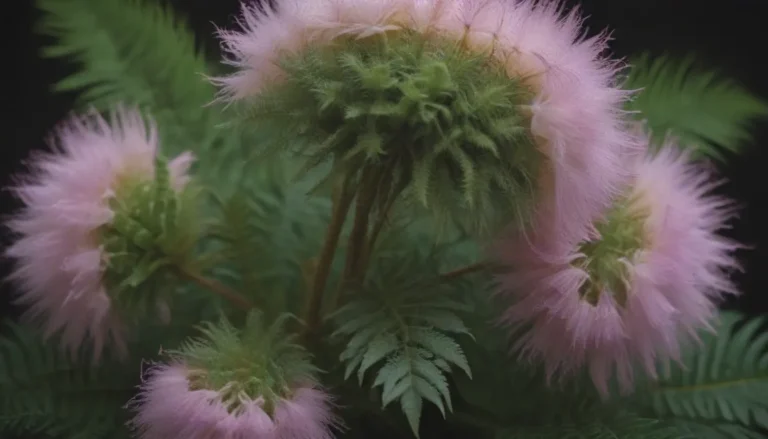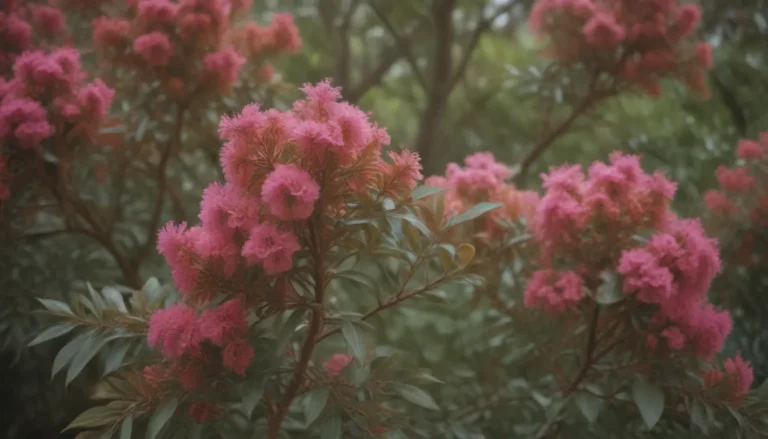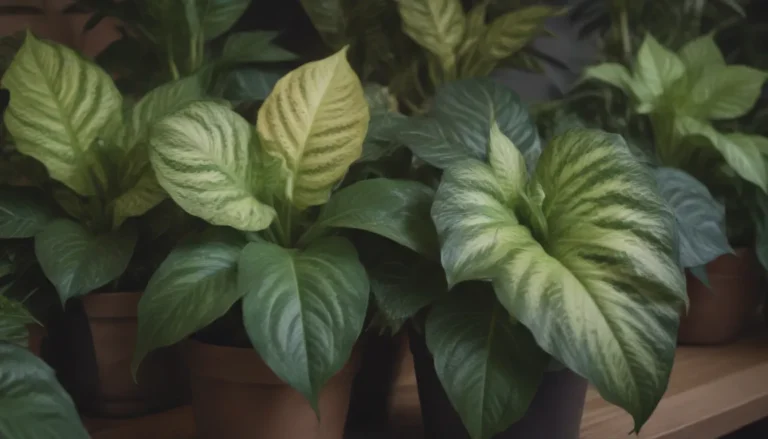Everything You Need to Know About Growing and Caring for the Beautiful Aglaonema Pictum Tricolor

Are you a plant lover with a hankering for something unique and exotic to add to your indoor jungle? Look no further than the stunning Aglaonema pictum tricolor! This variegated beauty is currently one of the most sought-after houseplants, and for good reason. With its glossy, oval leaves adorned with a captivating camouflage-like variegation pattern of three distinct shades of green, the Aglaonema pictum tricolor is a showstopper that is sure to capture the attention of anyone who lays eyes on it.
In this comprehensive guide, we will delve into everything you need to know about growing and caring for the Aglaonema pictum tricolor. From light and soil requirements to propagation and common problems, we’ve got you covered with all the essential information to help you keep your plant happy and thriving.
Why Aglaonema Pictum Tricolor Is a Must-Have
From the elusive Monstera albo to more common choices like the Philodendron Birkin or Ficus Tineke, variegated houseplants are all the rage in the plant community right now. The Aglaonema pictum tricolor, a part of the Aglaonema genus (commonly known as Chinese evergreens) and the Araceae family, has quickly risen in popularity and has become a coveted addition to many plant enthusiasts’ collections. Its unique variegation and beautiful foliage make it a standout choice for those looking to add a touch of exotic elegance to their indoor space.
Keep in mind that, like all plants in the Aglaonema genus, the Aglaonema pictum tricolor is toxic to pets, so it’s essential to take precautions if you have furry friends roaming around your home.
Aglaonema Pictum Tricolor Care Guide
While the Aglaonema pictum tricolor may be a bit elusive and pricey to acquire due to its popularity, it is generally well-suited for indoor growing and makes for a striking houseplant. Native to subtropical regions across Asia, this variegated beauty thrives in dappled light, warm temperatures, and moist, humid conditions. Let’s dive into the key care requirements to help your Aglaonema pictum tricolor flourish in your home.
Light
Provide your Aglaonema pictum tricolor with several hours of bright, indirect light to keep its variegated leaves looking their best. Avoid exposing the plant to direct sunlight, especially harsh afternoon sun, as this can result in leaf burn. However, a little morning sunlight, which is gentler, should be fine for your plant.
Soil
The Aglaonema pictum tricolor prefers consistently moist conditions but is sensitive to root rot, so it’s crucial to use well-draining soil. A mix of indoor potting soil, perlite, and orchid bark is ideal for this plant. Make sure the soil retains some water while allowing excess moisture to drain properly.
Water
Keep your Aglaonema pictum tricolor consistently moist, allowing the top inch of soil to dry out before watering again. Ensure that excess water can drain from the pot to prevent root rot. Remember, it’s better to underwater slightly than overwater this plant.
Temperature and Humidity
Maintain warm, humid conditions for your Aglaonema pictum tricolor to thrive. It prefers temperatures above 60 degrees Fahrenheit and humidity levels over 65%. Consider placing a humidifier near the plant or positioning it in a naturally humid room, such as a bathroom. You can also turn it into a greenhouse cabinet plant for optimal growth conditions.
Fertilizer
Feed your Aglaonema pictum tricolor with a diluted liquid fertilizer designed for houseplants every two weeks during the growing season. Cease fertilizer applications in fall and winter when the plant is not actively growing.
Propagating Your Aglaonema Pictum Tricolor
Want to expand your Aglaonema collection or share this beauty with friends? The Aglaonema pictum tricolor can be easily propagated through division or stem cuttings. Here’s how you can propagate your plant to create new additions to your indoor garden:
Propagation by Division
- Carefully separate the offshoots that grow from the main plant.
- Pot each offshoot in a suitable container with well-draining soil.
- Keep the new plants moist and provide them with the same care as the parent plant.
Propagation by Stem Cuttings
- Take stem cuttings from mature stems of the plant.
- Root the cuttings in a propagation medium until they develop roots.
- Transfer the rooted cuttings to individual pots and care for them as you would the parent plant.
Potting and Repotting Tips
Aglaonema pictum tricolor is a slow-growing plant that doesn’t require frequent repotting. Repot your plant every 2 to 3 years or when it outgrows its current container. Look for signs such as roots emerging from the drainage holes or circling the pot’s interior to indicate that it’s time for a new pot. Choose a container that is only slightly larger than the current one to prevent overwatering issues.
Dealing with Pests and Diseases
While the Aglaonema pictum tricolor is generally hardy, it can still fall victim to common houseplant pests like aphids, mealybugs, and spider mites. Keep an eye out for any signs of infestation and treat them promptly with neem oil or a suitable insecticide. Additionally, be cautious of overwatering to prevent root rot, a common issue with this plant.
Troubleshooting Common Problems
Despite being a relatively low-maintenance plant, Aglaonema pictum tricolor may experience some issues if its care needs are not met. Here are some common problems and how to address them:
Brown Leaves
Brown leaves typically indicate underwatering or low humidity levels. Ensure your plant receives adequate moisture and humidity, and avoid placing it near drafty areas that could dry out the air.
Yellow Leaves
Yellow leaves can signal overwatering, underwatering, insufficient light, or excessive light exposure. Assess your plant’s growing conditions to determine the cause and make adjustments accordingly. Maintain consistent moisture levels, provide ample indirect light, and avoid direct sunlight to prevent yellowing.
Drooping Leaves
If your Aglaonema pictum tricolor’s leaves are drooping, it’s a sign that the plant needs water. Give it a good drink, and your plant should perk up quickly. These plants are known to display dramatic responses to changes in care, so respond promptly to their signals.
Aglaonema Pictum Bicolor vs. Tricolor
A common point of confusion among plant enthusiasts is distinguishing between the Aglaonema pictum bicolor and tricolor varieties. While both plants belong to the same species, the main difference lies in their leaf coloring. The bicolor variant features two distinct colors, creating a marbled appearance, while the tricolor variant boasts three colors and a striking camouflage pattern.
To encourage full, bushy growth in your Aglaonema pictum tricolor, focus on providing it with optimal care and growing conditions. Unlike some houseplants, pruning won’t promote a fuller growth habit in Aglaonemas. Instead, prioritize bright light, regular fertilization, and appropriate watering to nurture healthy, lush foliage.
If you’re looking to add an Aglaonema pictum tricolor to your plant collection, you may need to hunt it down from specialized plant shops or online sources like Etsy. However, be sure to research the seller thoroughly and review their policies before making a purchase to ensure a positive buying experience.
With proper care and attention, your Aglaonema pictum tricolor will reward you with its stunning foliage and striking presence in your indoor oasis. Remember to monitor its growth, address any issues promptly, and enjoy the beauty this unique plant brings to your home.
Reference:
American Society for the Prevention of Cruelty to Animals. “Chinese Evergreen.” Aspca.org. n.d. Web.





